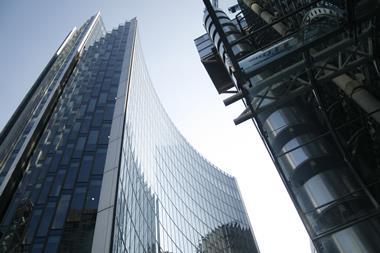The annual Super Return conference in Frankfurt brought in the great and the good of the private equity industry to not only debate the increasingly politicised role of private equity in the world, but also to network among their peers, investors and service providers in an environment that for those attending at least, certainly was not private and secretive despite sometimes adverse press comments.
The attack earlier this year on private equity investors in Germany by SPD chairman Franz Muntefering who compared them to an invasion of “locusts” stripping companies bare certainly was not far from the minds of many of the speakers.
David Rubenstein, the founder of Carlyle Group did not resent the description of private equity as locusts although he “would have preferred to be called a worker bee”. However, he felt the controversy was a wake-up call to the industry to be more aware of the political impact of their activities “We need to be sensitive to what local government and people think,” he announced.
On the other hand, Stephen Schwarzman of Blackstone outlined two studies that showed that private equity in Germany sustains economic growth and creates jobs with buy-out firms creating a 4.5% increase in the number of employees each year against the national average of 2.2% pa during the period 1998 to 2003. This outpouring of evangelism on the benefits to society of the growth of private equity did lead one delegate to proclaim that “it had brought tears to my eyes”. Guy Hands of Terra Firma also asked the reasonable question: “I heard a lot of focus on the big issues, but is that how you make money?” He pointed out that if private equity stops being entrepreneurial, it stops being alternative and becomes institutional and entrepreneurs will find another way of making money.
The private equity industry, however, clearly has aroused enormous press attention and Martin Halusa of Apax Partners, pointed out that this, combined with good returns leading to an influx of high net worth money alongside institutional investment means that the interest of regulators will increase. Despite this, as Schwarzman pointed out, private equity is still seen as a much more pleasant environment for companies to be in compared with the public arena where Sarbanes-Oxley has led to a very hostile decision-making environment for public companies. Many company CEOs want to go private so firms such as his are “flavour of the month”, Schwarzman finds.
Added value is the key theme for private equity managers in the modern world.
KKR’s Henry Kravis said that “today capital is a commodity. Anyone can do an LBO model. You need to have more than just money”. The mega funds can capitalise on their size in the way conglomerates of 15-20 years ago did to add value through the scale of their operations. “We can take several hundred millions of costs out of our group portfolio through bulk buying for insurance, car rental, etcetera,” according to Schwarzman.
While the mega funds can do well, the competition is far tougher in parts of the mid-market and according to one speaker “generalist mid-market players will get crushed” so that you need to be a niche player to survive. Baird Private Equity, for example, which does small mid-market investments in the US, UK and Germany, has 20 staff located in China whose role, according to Simon Havers, its UK MD, is to seek revenue growth and outsourcing opportunities for its portfolio companies, a niche strategy that few firms of its size could hope to emulate.
It is not only as outsourcing locations for manufacturing and services for European and US firms that Asia is of increasing interest to private equity firms. Goldman Sachs has seen enormous take-up of its ‘BRIC’ concept. Brazil, Russia, India and China, which are seen as “central players in the world economy and global policy making, affecting trade, capital markets, energy policy and investment decisions”.
While China has in the past attracted far more direct investment flows than India, that situation might not persist in the future. During the last year, it was claimed that 30 new Indian private equity firms have been set up, and there are concerns that too much money is flowing there, as in the rest of the world, which will lead to higher prices and lower returns.
The arguments for investment for China and India are very strong though. One speaker noted that in 1994, 85% of all buy-outs were in North America; in 2005, US and Europe each had 45% and Asia had 10%. But Asia has 36% of world GDP and US and Europe each have 25% so there is plenty of room to grow.
While private equity clearly does have a part to play in long-term institutional portfolios, the amount of cash that is now being directed at private equity does mean that potential investors need to be wary. “The level of debt and level of liquidity scares me. If you are an investor today, it is a difficult time; it feels like 1998,”was the view expressed by Rick Hayes of Oak Hill Partners, a firm which is preparing for the worst by building up its distressed debt capabilities.












No comments yet